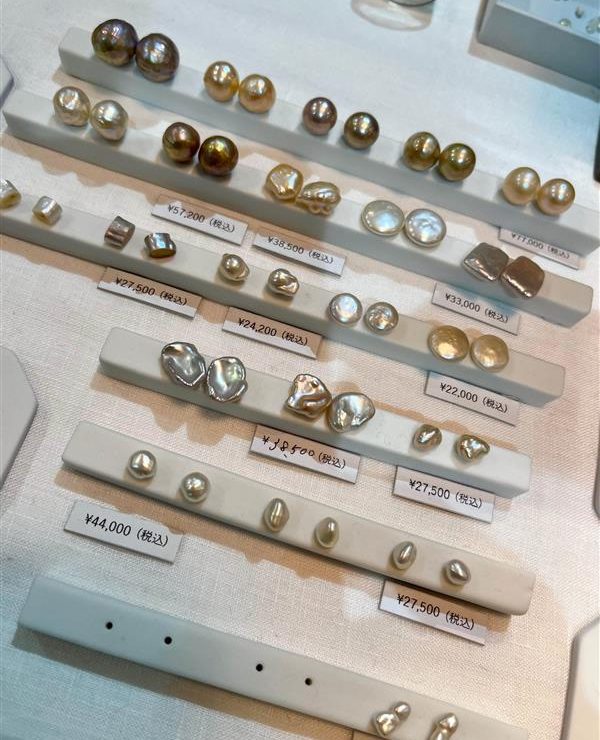Copyright GK Dynamics Inc., All Rights Reserved.

Copyright GK Dynamics Inc., All Rights Reserved.



What kind of shapes comes to your mind when you hear the word “pearl”? Perhaps you conjure up images of round-shaped objects. Round and beautiful shapes appear attractive to many people. The round shape of pearls as well as their texture certainly increase their values. As a matter of fact, such valuable shapes can’t be created through natural processes. They are born out of human efforts to artificially cultivate pearls from their cores that are shaved off from different shells and installed in oyster shells. Pearls’ beauty solely comes from its glittering surfaces, which in themselves are something like coating with pearl color.
You can see in the picture below some examples of pearls grown in Biwako lake in Japan. Some of them have flat shapes and others have rough surfaces. The reason why they vary in shapes is that they are cultivated in natural environment without human interventions. They are hundred-percent natural and free from artificial coating. In that sense, they are genuine to their core. Some pearl dealers even show their products’ cross-sections to prove their authenticity.
Now, I want you to take a moment and consider which one is more valuable for consumers. Do you prefer pearls with perfect shapes that are beautifully coated on different kinds of shells or the ones with uneven shapes that are made of genuine pearl shells? Should uneven natural shapes be regarded ugly or appealing in their own right?
It’s important for designers to keep turning over these issues. Of course, colors and shapes matter. But each product has its own value. I think it’s also designers’ responsibilities to find those values and communicate their messages.
Satoru Nagai
CMFG Design Dept.
Design Director